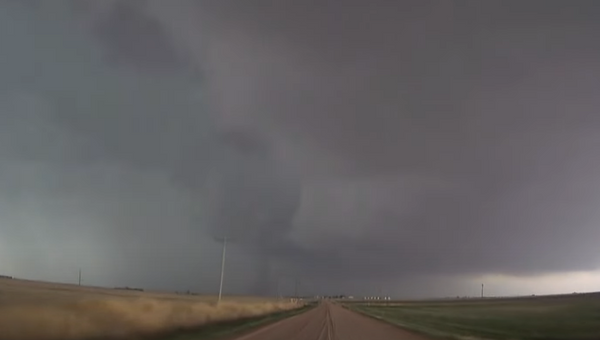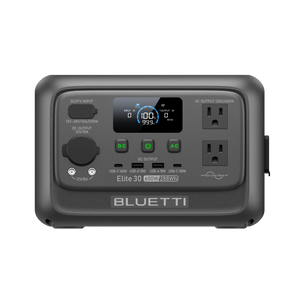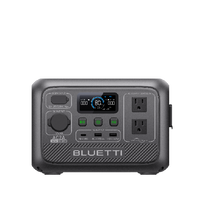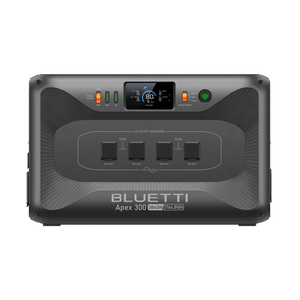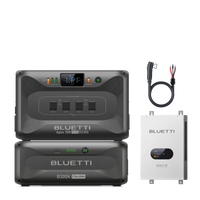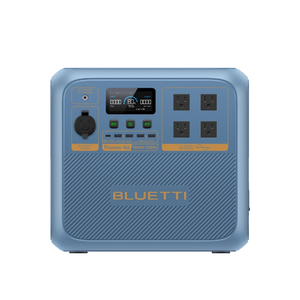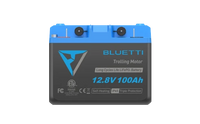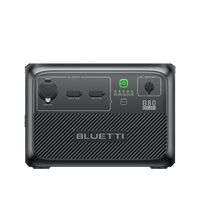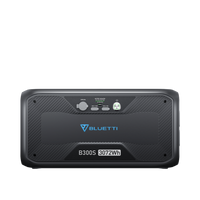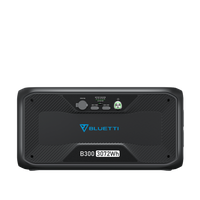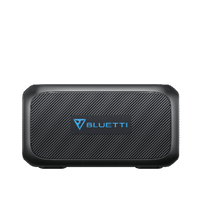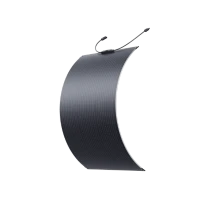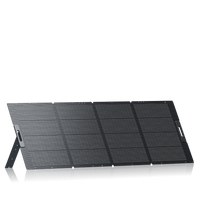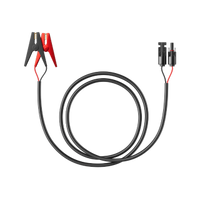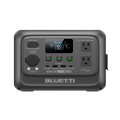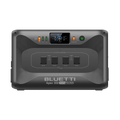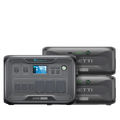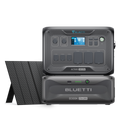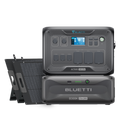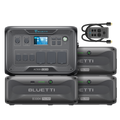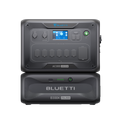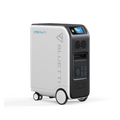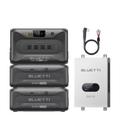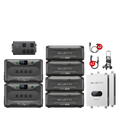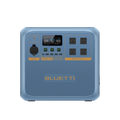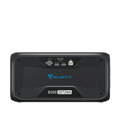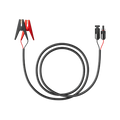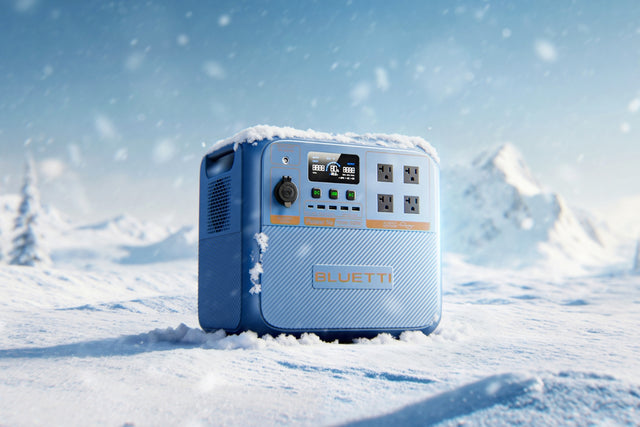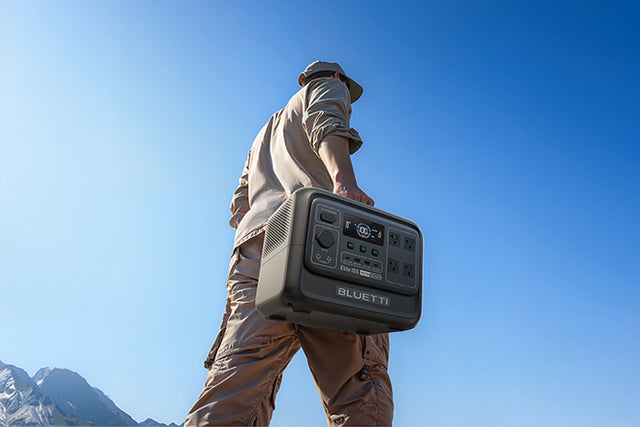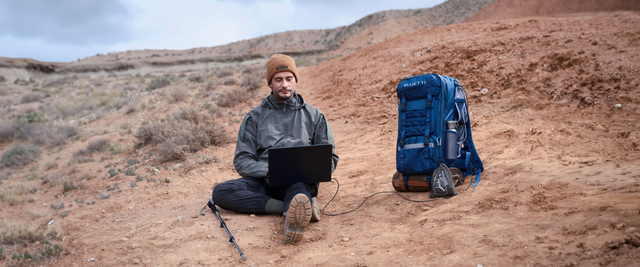Your cart is empty
Shop our products
Is a steaming hot cup of coffee your way to counter the chilly winters? But what if you find out that a snowstorm has caused a power outage and, resultantly, taken this treat away from you?
Of course though, in the event of a power outage during winter, coffee is going to be one of the least of a person’s worries. Especially if there’s work to be done, calls to be made and medical machines to be powered. But there is a solution to winter outages. And there’s a way to become more eco-friendly and to save on electricity bills. It’s by using a portable solar generator.
Many people wonder if portable solar generators can be used during the winter months. Well, the answer is a resounding yes. In this guide, we will discuss a number of ways in which you can use portable solar generators during the winter months, along with a wealth of other information about effectively utilizing solar generators once the mercury starts dipping.
Portable Solar Generators – Ways to Use Them This Winter
1) Portable Solar Generator for Heaters
Portable solar generators can be used to power heaters as long as they have sufficient output capacity. Since heaters require quite a bit of energy to function, you need to make sure your portable solar generator is adequately powerful.
When choosing a portable solar generator for a heater, it is important to consider the wattage since that is what determines if your chosen generator will be able to provide enough power to operate the heater. The wattage can be calculated by dividing the output capacity of your solar generator (in watt-hours) by the wattage use of your heater (in watts).
Example
Generally, a heater uses around 1,500 watts of power. So, in this case, a portable solar generator, such as the Bluetti EP500 with an output capacity of 5,100Wh AC output capacity, will be able to power your heater for:
5,100 watt hours/ 1,500W = 3.4 hours
Make sure to always go for a portable solar generator that is more powerful than what is required by your heater. This way, you will have some spare capacity to operate or charge other devices at the same time.
How to Ensure Safety While Using a Portable Solar Generator for Heater

Understand the Wattage
As mentioned, you should always use a generator with a larger capacity than what is required by your heater. A 500W or so surplus serves as a great safety net; for instance, if your heater needs 1500W, you should utilize a generator that has at least 2000W of output.
Extra wattage is even more critical if you want to use your portable solar generator for additional devices or multiple heaters. Running out of power in the middle of a freezing winter night is far from fun.
Use a Thermostat
Controlling the temperature is a crucial aspect of using heaters. If it becomes too hot, the heater can malfunction and overheat, thus posing a fire risk. If your heater is operating at an excessively high temperature, thermostats can stop you from squandering electricity.
Thermostats are frequently included in space heaters. If not, a detachable one is normally available as an accessory.
Use Heaters with Safety Features
Several space heaters have unique tip-over protection, so if they fall, they will immediately shut off. This tool works wonders to reduce mishaps. Likewise, some heaters automatically turn off as soon as they get too hot.
When working with high temperatures, safety should never be taken for granted.
Eliminate any Potential Fire Hazards
By keeping all flammable things far from your space heater, you can considerably lower the risk of fire when using a portable solar generator for your heater.
Other than that, never leave a running heater unattended.
Even though heaters are generally safe, accidents can and do happen – and can sometimes lead to house fires or other emergencies. If you leave your heater unattended for more than a few minutes, turn it off.
Also, as tempting as it may feel, never go to sleep with the heater running.
2) Portable Solar Generator for Coffee Maker
A portable solar generator is a great way to power your coffee maker during the winter months or even year-round. The major benefit of using a portable solar generator is that it is an eco-friendly and a renewable energy source, which means that it will neither run out nor produce any emissions harmful to you or the environment.
There are many different types of coffee makers out there, each with their own appearance, features, and, of course, power requirements. If you have a tiny, basic coffee maker, you can assume an energy use of 500 to 1200 watts. While a larger model needs 750–1200 watts, a smaller drip coffee maker consumes around 550–900 watts. Power requirements for a single-serve coffee capsule brewer may range from 900 to 1500 watts. Lastly, a 1000–1500 watt electrical supply is required for an automatic espresso machine. It's also important to keep in mind that coffee makers that allow you to brew coffee whenever you want and can keep water hot and will need a minimum of 60 watts per hour to maintain the temperature.
Example
Let us assume you are using the Bluetti AC200P with an output capacity of 2000Wh AC and your coffee maker takes up 600W of power. We are also assuming an efficiency rate of 85%.
You can now use the below formula to calculate the amount of time for which the portable solar generator will be able to power the coffee maker:
2000Wh AC*0.85/600 = 2.83 hours
3) Portable Solar Generator for Hair Dryers
The refrigerator and air conditioner immediately spring to mind when we think about heavy appliances. However, hair dryers also consume a lot of electricity.
A typical hair dryer, when at the highest possible setting, will use around 1,500 to 1,700 watts of power; for such hair dryers, you would need a portable solar generator with at least 2000Wh AC output capacity. However, some smaller dryers only use around 800 watts, which means that a portable solar generator with 1000WH AC output capacity should be good enough.
How to Calculate the Portable Solar Generator Requirements for a Hair Dryer
Hair dryers are available in a variety of shapes, styles, and functions. To determine the size of the generator you require, we must look more closely at the statistics because some consume more power than others.
Most hair dryers use between 800 and 1800 watts of power. However, this electricity use is calculated per hour. The usage will be lesser unless you use the dryer for a whole hour.
The below is a rough power usage guide for a 1,000 watt hair dryer:
- 60 minutes: 1,000 watts
- 30 minutes: 500 watts
- 15 minutes: 250 watts
- 5 minutes: 83 watts
So, assuming you use your hair dryer for 15 minutes a day, your daily power consumption will be around 250 to 275 watts.
Using the above numbers, we can draw the following conclusions:
- A 1000-watt dryer will not use up 1000 watts of power unless used for a full hour.
- If you use your hair dryer for 15 minutes a day (like most people do), your portable solar generator will use up around 250 to 275 watts of power.
- The more powerful the hair dryer is, the higher its power consumption requirements will be. But, on the flipside, it will dry your hair quicker and will therefore need to be used for a shorter duration.
- The opposite is true for hair dryers at the lower end of the power spectrum. They will have lower power consumption requirements, but will also take longer to dry your hair and will therefore need to be used for a longer duration.
To put it differently, the power consumption will remain more or less the same. That said, the design and efficiency of your particular hair dryer model can make a difference.
Technically, a 500-watt inverter might suffice. However, we still recommend going for at least a 1500-watt portable solar generator so that you have backup in case of power surges, extended usage, or if you need to use other electrical devices simultaneously.
How to Use Portable Solar Generators During the Winters

Generally, we get less sunlight during the winter months. This causes some people to think that solar generators will be ineffective in the colder months. However, that need not be the case; the below tips will help you get the most out of your portable solar generator during the winter season:
1) Keep Your Batteries Charged
Before relying on your portable solar generator for power during the winter, make sure the batteries are charged. It is important to pay attention to your battery levels and not let them drop too low. To make this easier, you could consider investing in a battery charge controller that helps you keep track of the amount of power present in your batteries at a given time.
This will allow you to timely charge your batteries and, at the same time, avoid overcharging them so that the batteries’ useful life is not cut short due to abuse or lack of use.
2) Conserve Energy
Although a good idea all year round, reducing your energy consumption in the winter is especially wise because this is the time of year when energy is most in demand. The less energy you use, the less the strain on your portable solar generator will be, and the better and more efficiently it will work. You can lower your power consumption by:
- Using energy-efficient light bulbs like LEDs (light-emitting diodes), CFLs (compact fluorescent lamps), and halogen incandescent Even though these energy-saving light sources are more expensive, they more than compensate for this extra cost through their high efficiency and longer lifespan.
- Turning off any unneeded appliances and lights. An empty room need not be lit, and the stereo or television need not keep playing if nobody is watching or listening to it. Utilizing smart thermostats or setting thermostats and lights on timers can help you use energy when you most need it, thereby reducing energy wastage and the costs that come with it.
- For extra warmth, you could consider using blankets or sweaters instead of keeping your indoor thermostat at the highest setting.
3) Use Extra Precaution During Harsh Weather Conditions
Cover the generator if there will be a lot of rain or snow in the following several days to prevent them from getting wet. Alternatively, you could use a waterproof cover to keep the generator from getting wet.
Warm Your Winters Up With a Portable Solar Generator
To sum up, portable solar generators are a cost-effective way to minimize disruptions and counter the potential power outages during the winter.
If you are looking for a portable solar generator for your winter needs, we invite you to check out our wide range of options. We offer a number of portable solar generators and can help you pick the one that best serves your budget and power requirements.
To learn more about portable solar generators for winters and explore your options, please feel free to reach out to us.
Shop products from this article
Be the First to Know
You May Also Like

Deadly Flooding Devastates U.S. South and Midwest — What You Need to Know

BLUETTI Teams Up with Leave No Trace to Power Sustainable Outdoor Adventures
